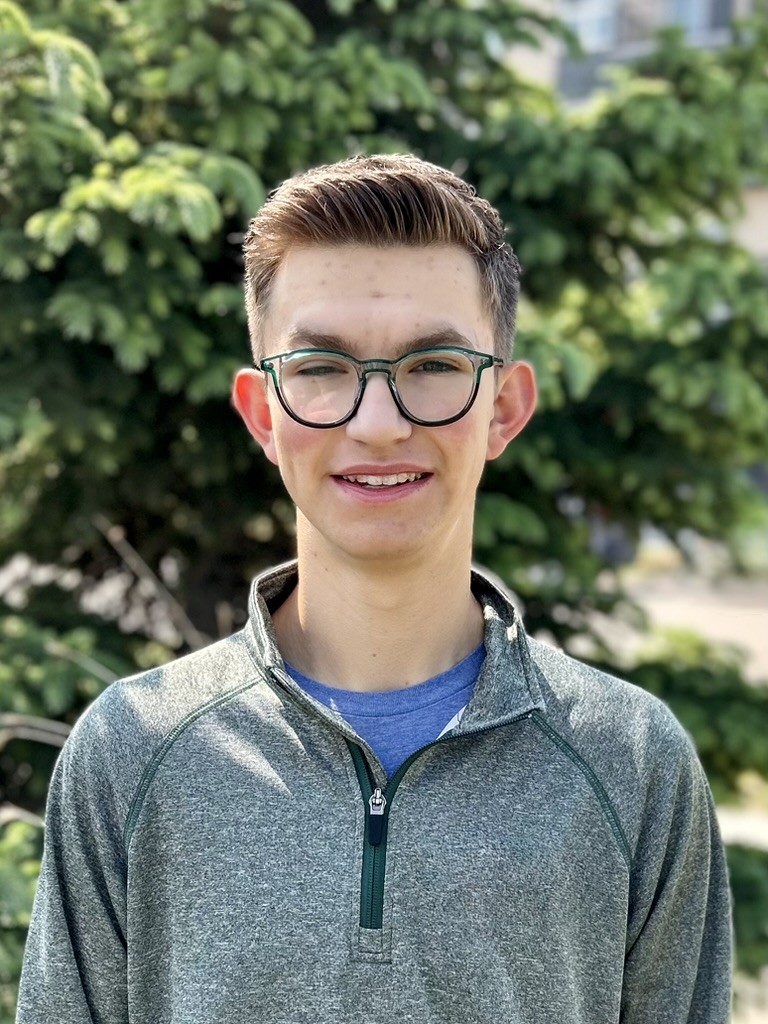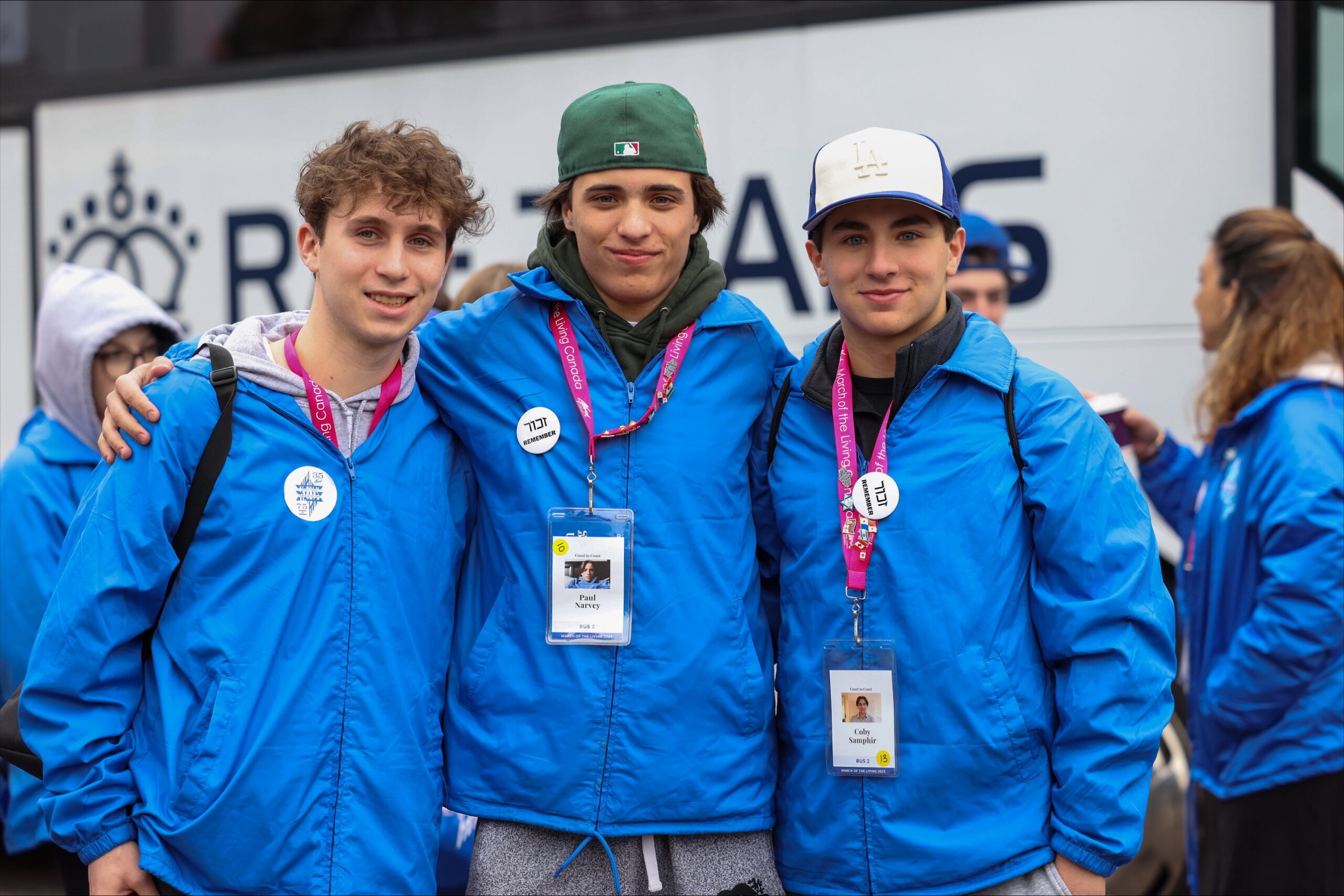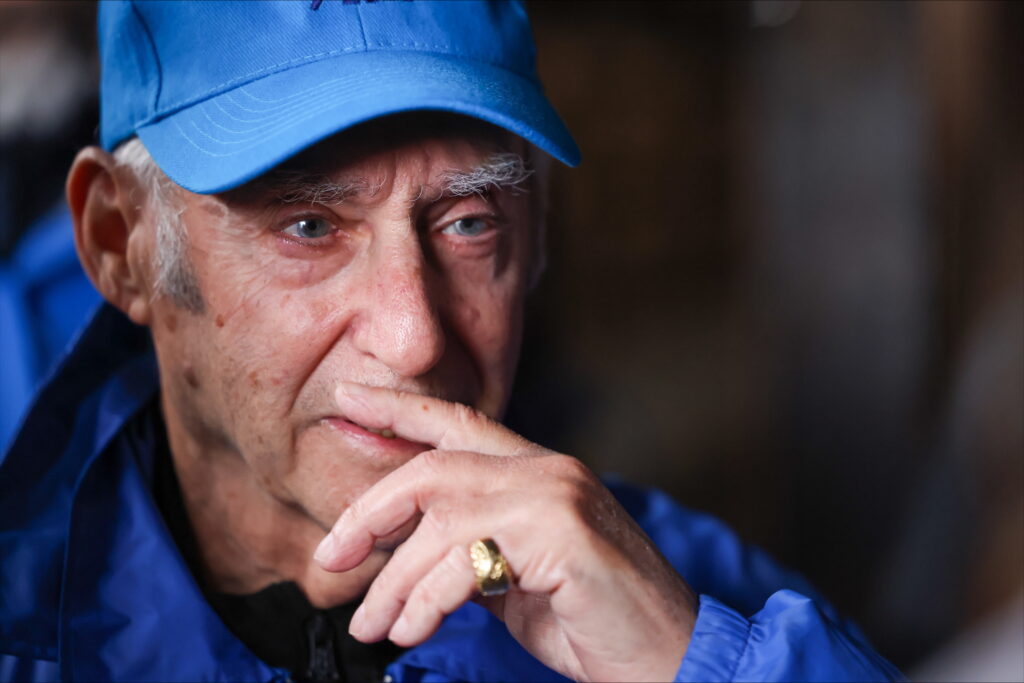Local News
High holiday services for both Etz Chayim and Shaarey Zedek congregations to mark last high holidays before both congregations move into new venues

By MYRON LOVE Rosh Hashanah, which begins on the evening of Friday, September 15 and Yom Kippur, on Sunday, September 24, finds our synagogue scene in a state of flux. While this will be the last Rosh Hashanah and Yom Kippur for Etz Chayim congregants in their current 70-year-old location in north Winnipeg, for Shaarey Zedek members this will be the last Yom Tov outside their building on Wellington Crescent – currently undergoing renovations and an expansion.
And, under the dynamic leadership of new executive director Dr. Rena Secter Elbaze, the Shaarey Zedek is going all out to make this a Yom Tov to remember.
This is the second year that the Shaarey Zedek will have been holding Rosh Hashanah and Yom Kippur services at the Asper Campus – with regular Shabbat services at the Berney Theatre and weekday services at Temple Shalom – and, Elbaze says, “in an effort to show our members that we appreciate their patience and understanding during this period of construction, we are offering all of our members free seating for Yom Tov for those who want to attend services in person as well as congregants viewing the services on-line.”
Non-members, she adds, can purchase their seats and will also be eligible for free seating if they participate in our daily minyanim or volunteer their time to help with Shabbat minyanim.
A further incentive will be the return of the popular Rabbi Alan Green to join Rabbi Anibal Mass to lead the main service. Rabbi Mass will also be leading the family service – accompanied by Grant Park High School Grade 12 student Noah Trachtenberg – in the Asper campus Multipurpose room.
Elbaze adds that the popular Quartet will be returning – along with the 20-voice Ruach Folk Choir to further uplift and engage participants in this year’s services.
Childcare will also be on offer.
Elbaze reports that thus far 350 have registered for in-person attendance (“We hope to have 500,” she says) along with106 for the family services and 92 for the online services.
“We have received over $21,000 in donations so far,” she notes.
As to regular Shabbat attendance, the numbers are still not back to where they were pre-pandemic restrictions. Elbaze reports that Shabbat services are averaging about 40 as compared to 175 three years ago.
“We are excited about our future prospects,” she adds. “We are making a concerted effort to attract younger people through organizing regular Shabbat dinners and havdalah parties in members’ homes.”
Meanwhile, Congregation Etz Chayim in north Winnipeg is celebrating its last Yom Tov at its current location at 123 Matheson. In November, our community’s second largest congregation will be leaving behind its 71-year-old building and moving to the former Shriners’ headquarters on Wilkes in south Winnipeg.
For this final Yom Tov on Matheson services will continue to be led by Rabbi Kliel Rose and Cantor Tracy Kasner – with Kelly Robinson leading the High Holy Day Choir. Jonathan Buchwald, Etz Chayim’s executive director, further reports that “this year, in addition to the regular adult choir, we will be incorporating youth voices as well.
“We are also offering a Family Service designed for young families led by Deborah Spigelman and Nina Eilberg. This will be a 45 minute service” and will include storytelling, games and songs.
In addition, there will be a Junior Congregation youth service for all ages and a special designated group for Kadima age children. And, on the first day of Rosh Hashanah and on Kol Nidre there will be a program designed specifically for teens in grades 9 to 12.
Services are available either in-person or online.
Rob Waldman, the president of the egalitarian Chevra Mishnayes congregation in Garden City, says that the board is not expecting much change from last year. “We hope that attendance will be a little higher this year,” he says.
Last year’s attendance was 90 – exceeding all expectations.
Once again, Al Benarroch will be leading the services.
Still with the North End, the venerable House of Ashkenazie, the last of our community’s older-style Orthodox congregations, is also, according to president Gary Minuk, expecting little change for Yom Tov from last year when about 50 were in attendance for the first day of Rosh Hashanah and over 40 for Kol Nidre – numbers which were the best in some years.
One new option this year for frum members of our community living in the North End may be the former Chavurat Tefila – on the corner of Hartford and McGregor – which has reopened – after being closed for three years – as the North End Orthodox Minyan. The new congregation began regular Shabbat services at the end of July and is planning to be open for all Yom Tovim throughout the year – but the situation for Rosh Hashanah and Yom Kippur is still to be determined.
South Winnipeg also has a new Yom Tov option this year in the form of services being offered by Rabbi Matthew Leibl at the Gates on Roblin. “Last year, I had a lots of people ask me what I was going to do for Yom Tov,” says Leibl, who has been in demand for weddings, funerals and other community events since he left the Shaarey Zedek four years ago. “I perceived that there was a need for another alternative for High Holiday services.”
“Services on the River: A modern High Holidays” are scheduled for the second day of Rosh Hashanah, Kol Nidre and Yom Kippur morning. “Because the Shofar is not traditionally blown on Shabbat, we decided to celebrate Rosh Hashanah on the second day instead to be able to have the shofar in our service, ” Rabbi Leibl explains.
“ ‘Services on the River’ will be three services designed to offer moments of reflection and introspection, beautiful live music, and a celebration of the Jewish New Year, all against the pastoral backdrop of the Assiniboine River, which will also be our site for Tashlich on Rosh Hashanah. Rabbi Leibl adds.
He notes that he will be blending his trademark Torah commentary, relevant explanations, and some humour with a mix of traditional and contemporary liturgy, to deliver a High Holy Day experience that will feel both familiar and modern. He adds that he will be working with the husband and wife cantorial team of Justin Odwak and Sarah Sommer. All services will run 90 minutes. While families are encouraged to attend, there are no programs designed specifically for children.
Rabbi Leibl reports that the venue can accommodate up to 400 and that, thus far, he has commitments from about 150.
Both Ruth Livingston and Jack Craven, presidents respectively of Reform Congregation Temple Shalom and the Orthodox Adas Yeshurun Herzlia in south Winnipeg are reporting that it is business as usual this year. Both are hoping to see some growth in the numbers in attendance though, as fears of Covid continue to recede.
The Lubavitch Centre will also be business as usual. Capacity for the south Winnipeg institution is about 250-300. There is no charge for those wishing to attend services.
And, after a three-year absence, the Simkin Centre will again be holding Yom Tov services that are open to the general public. The services, which will begin at 10:00 A.M. on all three days of Yom Tov, will be led by Steven Hyman with the choir being led by Bonnie Antel.
Caitlin Liewicki, the manager of Resident Experience, is asking that anyone who may be planning on attending the service from the public to RSVP either by email (caitlin.liewicki@simkincentre.ca) or telephone (204- 589-9008), so that she knows how many to plan for.
Finally for those who enjoy the alternative – and, by now traditional services in their own way – at Camp Massad, there remains one more option for those seeking to attend a High Holiday service. After two years absence, Camp Massad is resuming its innovative Rosh Hashanah service. Daniel Sprintz, the camp’s executive director, is pleased to announce that Massad will again be hosting its usual Rosh Hashonah program on the second day.
“We offer a creative and interactive service that combines some traditional prayers with contemporary readings, folk music and our usual Camp massad Shtick,” Sprintz says. “Our services will be followed by a kosher lunch and Tashlich at the Lake.”
The service, this year, he notes, is being led by Rabbanit Dorit Kosmin. In pre-Covid times, Sprintz reports, Rosh Hashanah at Massad attracted as many as 150 participants. Last year, 90 attended. He is hoping to have a somewhat larger number this year.
The Registration deadline (massad.ca) is September 15.
Yom Tov this year begins on Friday, September 15, in the evening.
Wishing all readers a sweet new year.
Local News
Further to the Simkin Centre’s financial situation

By BERNIE BELLAN A while back I published an article about the deficit situation at the Simkin Centre. (You can read it at “Simkin Centre deficit situation.“) I was prompted to write that particular article after reading a piece written by Free Press Faith writer John Longhurst in the August 5 issue of the Free Press about the dire situation personal care homes in Winnipeg are in when it comes to trying to provide their residents with decent food.
Yet, Longhurst made one very serious mistake in his article when he wrote that the “provincial government, through the Winnipeg Regional Health Authority, has not increased the amount of funding it provides for care-home residents in Manitoba since 2009.”
In fact, the WRHA has given annual increases to personal care homes, but its allocations are not broken down by categories, such as food or salaries. As a spokesperson for the WRHA explained to me in an email: “PCHs receive per diem global operating funding based on the number of licensed beds they operate. This funding model is designed to support the full range of operating costs associated with resident care, including staffing, food services, utilities, building operations, and other day-to-day expenses.”
Now, one can make a perfectly valid argument that the level of funding from the WRHA has not kept up with inflation, especially inflation in food costs, but the Simkin Centre is in an even more precarious position because of the skyrocketing cost of kosher food.
“In recent years,” according to an article on the internet, “the cost of kosher food has increased significantly, often outpacing general food inflation due to unique supply chain pressures and specialized production requirements.”
Yet, when I asked Laurie Cerqueti how much maintaining a kosher facility has cost the Simkin Centre, as I noted in my previous article about the deficit situation at Simkin, she responded: “approximately $300,000 of our deficit was due to food services. I do not have a specific number as far as how much of the deficit is a result of kosher food…So really this is not a kosher food issue as much is it is an inflation and funding issue.”
One reader, however, after having read my article about the deficit situation at Simkin, had this to say: “In John Longhurst’s article on Aug 5, 2025 in the Free Press, Laurie (Cerqueti) was quoted as saying that the annual kosher meal costs at Simkin were $6070 per resident. At Bethania nursing home in 2023, the non-kosher meal costs in 2023 were quoted as $4056 per resident per year. Even allowing for a 15% increase for inflation over 2 years, the non-kosher food costs there would be $4664.40 or 24% lower than Simkin’s annual current kosher food costs. If Simkin served non-kosher food to 150 of its 200 residents and kosher food to half of its Jewish residents who wish to keep kosher, by my calculation it would save approximately $200,000/year. If all of Simkin’s Jewish residents wished to keep kosher, the annual savings would be slightly less at $141,000.”
But – let’s be honest: Even though many Jewish nursing homes in the US have adopted exactly that model of food service – where kosher food is available to those residents who would want it, otherwise the food served would be nonkosher, it appears that keeping Simkin kosher – even though 45% of its residents aren’t even Jewish – is a “sacred cow” (pun intended.)
So, if Simkin must remain kosher – even though maintaining it as a kosher facility is only adding to its accumulated deficit situation – which currently stands at $779,426 as of March 31, 2025,I wondered whether there were some other ways Simkin could address its deficit while still remaining kosher.
In response to my asking her how Simkin proposes to deal with its deficit situation, Laurie Cerqueti wrote: “There are other homes in worse financial position than us. There are 2 homes I am aware of that are in the process of handing over the keys to the WRHA as they are no longer financially sustainable.”
I wondered though, whether the Simkin Centre Foundation, which is managed by the Jewish Foundation of Manitoba might not be able to help the Simkin Centre reduce its deficit. According to the Jewish Foundation’s 2024 annual report, The Saul and Claribel Simkin Centre Foundation, which is managed by the Jewish Foundation, had a total value of $11,017,635.
The Jewish Foundation did distribute $565,078 to the Simkin Centre in 2024, but even so, I wondered whether it might be able to distribute more.
According to John Diamond, CEO of the Jewish Foundation, however, the bylaws of the Foundation dictate that no more than 5% of the value of a particular fund be distributed in any one year. There is one distinguishing characteristic about the Saul and Claribel Simkin Centre Foundation, in that a portion of their fund is “encroachable.” The encroachable capital is not owned by JFM. It is held in trust by JFM but is beneficially owned by Simkin, similar to a “bank deposit”. While held by the JFM, these funds are included in the calculation of Simkin’s annual distribution.
I asked John Diamond whether any consideration had been given to increasing the distribution that the Jewish Foundation could make to the Simkin Centre above the 5% limit that would normally apply to a particular fund under the Foundation’s management.
Here is what John wrote in response: “The Simkin does have an encroachable fund. That means that at their request, they can encroach on the capital of that fund only (with restrictions). This encroachment is not an increased distribution; rather, it represents a return of capital that also negatively affects the endowment’s future distributions.
”It is strongly recommended that encroachable funds not be used for operating expenses. If you encroach and spend the capital, the organization will receive fewer distribution dollars in the next year and every year as the capital base erodes. Therefore, the intent of encroachable funds is for capital projects, not recurring expenses.”
I asked Laurie Cerqueti whether there might be some consideration given to asking for an “encroachment” into the capital within the Saul and Claribel Simkin Centre Foundation?
She responded: “We are not in a position where we are needing to dip into the encroachable part of our endowment fund. Both of our Boards (the Simkin Centre board and the Saul and Claribel Simkin Centre Foundation board) are aware of our financial situation and we are all working together to move forward in a sustainable way.”
At the same time though, I wondered where donations to the Simkin Centre end up? Do they all end up in the Simkin Centre Foundation, for instance, I asked Laurie Cerqueti on December 15.
Her response back then was: “All donations go through our Foundation.”
I was somewhat surprised to read that answer, so I asked a follow-up question for clarification: “Do all donations made to the Simkin Centre end up in the Simkin Centre Foundation at the Jewish Foundation?”
The response this time was: “No they do not.”
So, I asked: “So, how do you decide which donations end up at the Foundation? Is there a formula?”
Laurie’s response was: “We have a mechanism in place for this and it is an internal matter.”
Finally, I asked how then, the Simkin Centre was financing its accumulated deficit? Was it through a “line of credit with a bank?” I wondered.
To date, I have yet to receive a response to that question. I admit that I am puzzled that a personal care home which has a sizeable foundation supporting it would not want to dip into the capital of that foundation when it is facing a financial predicament. Yes, I can see wanting the value of the foundation to grow – but that’s for the future. I don’t know whether I’d call a $779,425 deficit a crisis; that’s for others to determine, but it seems pretty serious to me.
One area that I didn’t even touch upon in this article, though – and it’s something I’ve written about time and time again, is the quality of the food at the Simkin Centre.
To end this, I’ll refer to a quote Laurie Cerqueti gave to John Longhurst when he wrote his article about the problems personal care homes in Winnipeg are facing: “When it comes to her food budget, ‘we can’t keep making the same number of bricks with less straw.’ “
Local News
Exclusive: Security Enhancement Fund to be announced by Province in coming days

By NOAH STRAUSS The province is set to announce a new program called the Security Enhancement Fund, which
will provide funding to religious and faith groups to improve security at institutions such as
synagogues and mosques. In an exclusive interview, Minister of Justice Matt Wiebe outlined the
plan and detailed what the province has already done to help protect Jewish Manitobans.
“What we want to do is to be able to provide the community with the kind of tools that they need
to stay safe and to ensure that everyone in the community feels safe,” said Wiebe.
The fund will provide a missing link between government and religious communities, and
communities will now be able to make their own choices without money being a big restraint.
Essentially, the power will be in the hands of community leaders and not government officials.
The minister noted that the new partnerships will provide the province a better understanding of
the needs of every community. Rather than the province making the choices, they are
essentially giving a voice to each community. The grants, totalling $1 million, will provide funds to enhance security at facilities like synagogues.
The Jewish Post reached out to Dr. Rena Secter Elbaze, executive director of Congregation
Shaarey Zedek. “It’s important that the government show us that they’re taking security seriously and stepping up to the plate to make this offer. We will absolutely be applying for grant money,” she said. Elbaze also wants to know whether or not the government will cover the costs of things the synagogue has already spent money on. She noted that the province has, in the past, made grants available to have security guards present.
When speaking about what the Justice Ministry has already done to protect Jewish Manitobans,
Wiebe brought up the new special prosecutor that is focusing on hate crimes. Wiebe said the
special prosecutor works closely with the Winnipeg Police Service “to support investigations and
prosecute hate crimes. Wiebe also went on to say how the Department of Education has been helping to fight antisemitism. “The creation of the Holocaust education curriculum is an important step in the right direction,” he said. When asked about Oliver Didtger Ederhof, the individual charged with 14 counts of mischief including vandalism of Shaarey Zedek, Wiebe said decisions like bail and police undertakings are decisions that are in part made by the federal government through the criminal code and policies. “We’re going to continue to advocate for stricter bail reform at the federal level…. I’ve been very clear, we issued clarified directives around bail to our Crown prosecutors.”
The full announcement from the province is expected in the coming days.
Local News
March of the Living 2023 participants form Taste of Hope project to help honour the memory of Holocaust survivor Alex Buckman

By BERNIE BELLAN The March of the Living is an annual two-week international educational program that brings thousands of students and adults to Poland and Israel to study the Holocaust, Jewish history, and the rise of the State of Israel. Founded in 1988, it features a 3-kilometer silent walk from Auschwitz to Birkenau on Yom HaShoah (Holocaust Remembrance Day).
Attendees on the march are accompanied by adults, some of whom themselves have been Holocaust survivors.
Following the week in Poland, participants travel to Israel to observe Yom HaZikaron (Israel’s Memorial Day) and celebrate Yom HaAtzmaut (Israel’s Independence Day), marking a journey from darkness to life.
For many years the coordinator of the march in Winnipeg was Roberta Malam, working on behalf of the Jewish Federation of Winnipeg. More recently Abby Flackman filled that role, and now the person in charge is Lindsey Kerr.
Since its inception 37 years ago the March of the Living has become a rite of passage for many young Winnipeg Jews who have been able to participate as an organized group from Winnipeg and combine visits to the death camp at Auschwitz-Birkenau in Poland with the subsequent trip to Israel.
Then – the Covid pandemic hit – in 2020, and the March of the Living was put on hold for two years – in 2020 and 2021.
In 2022, the March of the Living resumed, but there was no organized contingent from Winnipeg participating. (There may have been some Winnipeggers who did go on the march that year, but if there were any they would have been part of a general Canadian group since there was no Winnipeg coordinator that year.)
In 2023, however, once again a very large contingent of young Canadian Jews – 51 altogether, of whom approximately two-thirds were from Winnipeg, went on that year’s March of the Living. That particular march was memorable for many reasons, including the fact it was the last full march since 2019 and was to remain the last march to have an organized Winnipeg contingent in the past six years as the years 2024 and 2025 were interrupted by the war in Gaza. (There were smaller marches held in 2024 and 2025, but again there was no organized contingent from Winnipeg.)
Recently, we were contacted by one of the participants of that 2023 march, Ethan Levene, who asked us whether we’d be interested in running what turned out be a very poignant story about one particular aspect of that 2023 March of the Living.
Here is what Ethan wrote:
“In April 2023, the Coast to Coast Canadian delegation of March of the Living was privileged to travel with Holocaust survivor Alex Buckman (z”l). March of the Living is a Holocaust education trip that allows participants to visit and bear witness to the sites of the Holocaust. Unfortunately, while sharing his story in Poland, Alex passed away. However, the impact he left on us students was immeasurable.

“While speaking to us in Warsaw, Alex told us the story of his Aunt Becky’s gâteau à l’orange (orange cake). While in Ravensbruck concentration camp, his aunt managed to write down this recipe. After his parents’ murder, his Aunt Becky went on to raise Alex after surviving. In addition to sharing his story, Alex tasked us with baking the cake with family and friends.
“Out of this, a group of alumni from our trip have created this project: ‘A Taste of Hope.’ On February 1st, university students from over 5 universities across Canada will come together to bake the gâteau à l’orange and hear Alex’s story. Proceeds from the event and this fundraising page will support the World Federation of Jewish Holocaust Survivors and Descendants. Alex was heavily involved with this organization, whose mission is to both create community for Holocaust survivors and their descendants and educate about the Holocaust to help fight against antisemitism and all forms of bigotry and hate.
“Here is information from our fundraising page for the event – ‘A Taste of Hope’: Fundraising for A Taste of Hope.
Ethan added that “it’s completely student led, all by alumni from our 2023 trip attending university at these various locations across Canada; Winnipeg, London, Kingston, Montreal.”
He also added: “Follow us on instagram@tastehope.“
Here is a link to a CBC story about Alex Buckman: Alex Buckman story
In a subsequent email Ethan gave the names of Winnipeggers who are involved in A Taste of Hope: Ethan Levene (studies at McGill), Zahra Slutchuk, Alex Stoller (studies at Queens), Coby Samphir, Izzy Silver (studies at Waterloo).
He also added names of others who are involved in the project: Jessie Ages, Anneke Goodwin, Lilah Silver, Ella Pertman, Ellie Vogel, and Talia Cherun.
To find out more about March of the Living in Winnipeg go to: March of the Living


